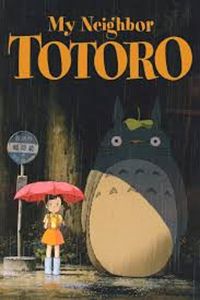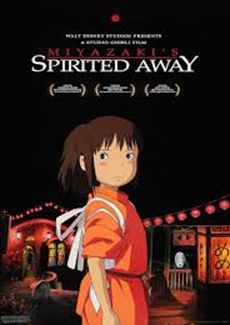- within Technology topic(s)
- in United States
- in United States
- within Technology, Real Estate and Construction and Corporate/Commercial Law topic(s)
- with readers working within the Law Firm industries
Introduction
Can Artificial Intelligence borrow beauty, or is it simply stealing it? The same issue was raised in the recent social media fad of 'Ghibli Studio Style' photos, which everyone was obsessed with. 'Studio Ghibli' was founded by Hayao Miyazaki and Isao Takahata and is renowned for its enchanting anime, which is often characterised by lush visuals, imaginative storytelling, and thematic depth. Ghibli has its unique aesthetics, which gained global recognition and has inspired a wave of AI-generated art seeking its distinctive style. This rise of technological advancement has empowered AI to replicate the style of art belonging to original artists, resulting in discussions about the implications associated with such acts of replication.
Critical concerns around these AI-generated artworks regarding the resulting Intellectual Property violations, like authorship and copyright, are significantly highlighted through this replication and reproduction of established artistic styles without the prior consent of these owners. With an increasing artistic replication through AI, including the replication of 'Studio-Ghibli style,' in the name of 'artificial creativity,' it is becoming increasingly urgent to address the ethical implications behind these AI creations. Therefore, this interlinking between technology and art invites deep scrutiny to protect the rights of original creators while navigating through the rapidly growing digital landscape.
Soul Behind the Style: Studio Ghibli & Hayao Miyazaki

Studio Ghibli was established in 1985 by Hayao Miyazaki and Isao Takahata, famed for animated storytelling and voice acting. As the studio's visual auteur, Miyazaki has had a significant role in shaping the studio's identity as a visual auteur, with its detailed and innovative hand-drawn animation and its rich characterisations rooted in the method of developing one character at a time. This amalgam is reflected in the studio's renowned images, 'Spirited Away' and 'My Neighbour Totoro,' which present lush visual artistry, sophisticated thematic research, and a keen concentration on human emotions, setting them apart from other Western creations.
Studio Ghibli is built upon the foundation of containing Japanese folklore, social attitudes, and themes, and tampering with the form itself as reimagined entertainment and anime perception on global scales. These Ghibli films often tackle difficult and fundamental subjects, such as war and degradation of the environment, unlike mainstream animations, which tend to portray sugar-coated stories. The magic and artistry of the Studio also manifested in Miyazaki's artistic legacy and crafts, in lush, visual experiences that connect with deeply engaging, vital cultural discourse, to people of all ages, globally.

How AI Platforms are fuelling Ghibli Style Replication
The modern-day AI generation platforms, such as Midjourney, DALL-E, ChatGPT, and Runway, have seen a hike in their popularity for their ability to produce breathtaking visuals based on user-defined prompts. The users of these platforms are allowed to explore rich artistic styles, including prompts like 'Ghibli-style selfie' or 'Ghibli-style cities,' which evoke the distinct aesthetic of Studio Ghibli's animations. The generation of such artistic work using these platforms is so easy that it has resulted in widespread sharing and virality of these AI-generated images on social media, where users eagerly showcase their unique creations.
However, a significant issue arises from the training of these AI systems' datasets on materials, including copyrighted materials, including images from Studio Ghibli. This raises significant concerns regarding the replication of the intellectual property incorporating distinctive styles, without the authorisation of the proprietor, resulting in infringements on the rights of these original creators. Consequently, the debate around AI-generated art includes the topic of new creative possibilities along with the ongoing discussions about ethical practices, coupled with various implications for artists' rights in this evolving situation.
Overview of Intellectual Property Rights Violated
The increasing use of AI in generating user-based content, often without the prior consent of the original creator, results in infringement of the creator's rights and IP violations.
- Copyright Infringement: Unauthorised replication of the original work of an artist without prior consent results in copyright infringement, relevant to AI-generated pictures mimicking the original artistic styles, potentially infringing the rights belonging to the proprietor.
- Moral Rights Violations: Though the distortion in the replicated artworks of the original artists can lead to the risks of distortion of the artist's original intent behind the masterpiece, often branded in their name, concluding in a potential harm to their reputation and raising ethical dilemmas regarding their moral rights.
- Trademark Dilution: AI-labelling of replicated art pieces as 'Ghibli style' causes confusion and often misleads the consumer, amounting to trademark dilution or passing off through misleading brand identities, while they try to ascertain whether the copied art is of equal quality and standing with the original brand in the market.
- Unjust Enrichment: commercialising of the derivative work without the original creator's consent raises the issues of unjust enrichment, imposing a need for clearer guidance regarding the economic use of AI- generated content.
- Training Data Ethics: In any respect, the ethics behind scraping the copyrighted materials without authorization to be used upon the training of AI-databases are paramount. Most of the AI platforms reportedly use large sets of images, usually copyrighted art pieces, without the prior consent of their original creator and hence fuel debates as to whether such acts are legal or moral.
Legal Framework & Jurisdictional Challenges
The global standards of copyright enforcement for authors' rights are promoted through internationally established IP protection mechanisms, like the Berne Convention and the TRIPS Agreement. Similarly, Miyazaki enjoys strong moral rights granted to him under Japanese jurisdiction to ensure respect for their artistic expressions. Contrarily, discussions regarding the use and transformative works often complicate the scenario in the US and India by focusing on AI-generated content through original styles. However, regulation of these AI models has presented additional challenges, especially with cross-border enforcement, posing difficulties in overseeing and mitigating the unauthorised use, further complicating the situation.
The Ghibli trend has grabbed the attention of Studio Ghibli, which remained reserved in expressing its concerns for the infringement without resorting to an immediate lawsuit. Miyazaki has also publicly condemned the generation of art using AI platforms, further characterising it as "an insult to life itself," further reflecting the deep roots of respect for the artistic process. The studio is careful in approaching AI advancement, stressing the need for the integrity of traditional creative forms, unlike Disney's vigorous trademark enforcement, which often results in fast legal actions.
Moreover, AI and creativity interplay are constantly evolving, imposing a need for stricter regulations around the data training of these AI databases to mitigate infringement risks. It can be achieved by establishing opt-out datasets, enabling artists to refuse the use of their work and legal watermarking of the original art pieces from the AI-generated art. The mechanisms of compensation for artists shall also be considered, in addition to the users and platforms bearing ethical responsibilities to navigate these complexities and ensure respect and protection for the artist's rights.
Conclusion
Thus, with advancements in the AI sector regarding the replication of artistic styles and the generation of visually jaw-dropping artworks, a lack of emotional depth and the creative soul of human artists persists, striking the need for balance between embracing technological development and preserving the creative integrity of artists. Moreover, it is noted that just because something could be generated does not imply that it should be generated, contrary to the ethical implications and respect towards the artist's journey, honouring the emotional labour behind the art. Navigating through this landscape, artists, technology, and the audience need to acknowledge and distinguish between art produced by AI and human artists' irreplaceable artistic expression, as a contribution to authenticity and originality.
The content of this article is intended to provide a general guide to the subject matter. Specialist advice should be sought about your specific circumstances.

